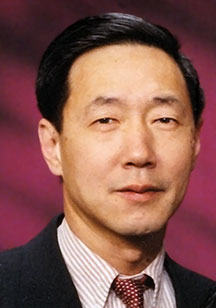INTERVIEW

“Trading is a zero-sum game. Every gain by one trader is offset by an equal loss by another trader. ”
You’re Able With AbleSys
Create Your Trading System
With John Wang
John Wang received his bachelor’s degree in chemical physics from University of Sciences and Technologies of China (Ustc), his master’s degree in quantum chemistry from Zhongshan University (China), and his doctorate in physical chemistry from University of California, Santa Cruz. He was a senior scientist at a leading gas analyzer company in Silicon Valley for 10 years. He began trading futures in 1989 and remains an active trader today. A Commodity Trading Advisor (Cta) since 1995, Wang cofounded AbleSys in 1994, created the Spyglass trading system in 1992, AscTrend indicators in 1995, developed the eAscTrend trading system in 2000, and introduced AbleTrend in 2007. His extensive background in both trading and natural sciences uniquely qualify him to create and develop computerized trading systems. AbleTrend: Identifying And Analyzing Market Trends For Trading Success, the book written by Wang and his wife Grace, will be published by John Wiley & Sons in April 2010. You can contact John Wang at ablesys1@ablesys.com.
Stocks & Commodities Editor Jayanthi Gopalakrishnan and Staff Writer Bruce Faber interviewed Wang on November 9, 2009, via telephone and email.
John, how did you get interested in the financial markets and technical analysis?
With a doctorate in physical chemistry, I was always most interested in discovering the hidden structure underlying life’s seemingly random events. So it may not have been an accident that led me to turn my analytical eye on one of the world’s most seemingly chaotic phenomena — the financial markets.
It all started when I was working as a senior scientist at a leading gas analyzer company in Silicon Valley, CA. It was 1989, and a friend talked me into investing $10,000 in a Standard & Poor’s 500 futures trading pool. My friend told me it returned 10% a month, and he told me he had received returns of $3,000 in the previous three months. At that time, I knew nothing about trading, and that’s why a 10% return per month didn’t set off any alarms with me, indicating that it might be too good to be true. Two months later, the Cftc shut down the investment company, which was revealed to be a multimillion-dollar Ponzi scheme. I lost $7,000 of the $10,000.
This incident turned out to be a good thing for me. It introduced me to a whole new world — the futures and commodity trading industry. And rather than scaring me off, it triggered my curiosity about trading.
What decisions led you to create AbleTrend?
We face these questions every day: Is market behavior random, or does it follow certain rules? Is the market completely chaotic, or is there a hidden order? Can markets be quantified or predicted using scientific methods? Most economists believe that markets are random and chaotic and cannot be predicted. A smart man once told me that if you could know just a bit about market law, the world would be yours. But most people don’t believe there is such a thing as market law.
Up to that point, I had been steeped in the world of physics all my life. But thanks to my friend who introduced me to the world of investing, my interests broadened to include financial matters. But I was still a scientist, and the more I became interested in trading the markets, the more my scientific sensibilities were focusing that way. My work was driven by the dream that something better was possible.
I was looking for something fundamentally sound, something that should work under any and all market conditions. It had to be universal, working in any market and for charts in any time frame: hourly, daily, weekly, and so on. If there was hidden order behind all markets — and I strongly believed there had to be — I wanted to find it.
Over a 20-year period from the 1960s to the 1980s, the National Science Foundation funded and supported thousands of scientists to finish a huge project: numerically working through most standard mathematical computations. On the shoulders of those scientists, I developed a simulation program by using the huge libraries of Linpack and Eispack. The Linpack, used for linear algebra computations, was developed at Argonne National Laboratories. Eispack is another huge software library for Eigen system solutions.
The software program I developed from 1983 to 1988 during my graduate study at UC Santa Cruz not only can be applied to molecular spectral simulations, but to any kind of mathematical simulation. That was why I decided to use this approach as the starting point of my investigation into the financial markets.
Applying it to the stock market proved to be complicated. I needed to simplify the process and find mathematical models to simulate the Djia index waves.
Then in 1994, after countless tests of different models and formulas, I hit on one proprietary mathematical model that worked very well with the Djia index waves. I applied the model to other markets such as gold, wheat, Treasury bonds, and so on. They all showed positive results.